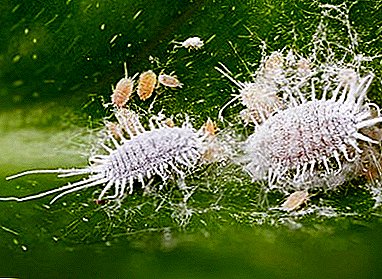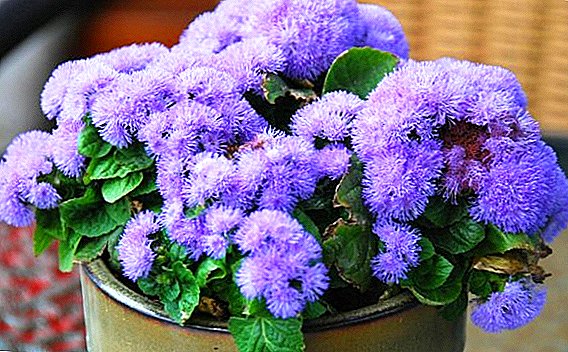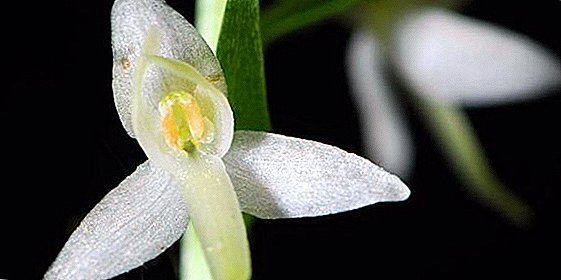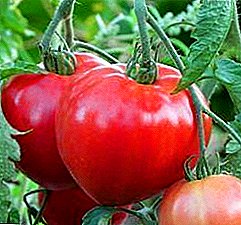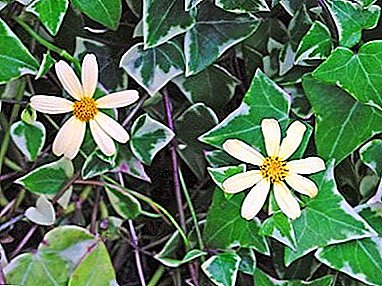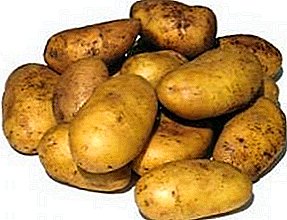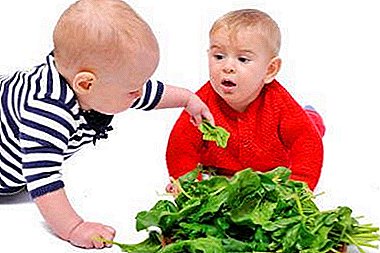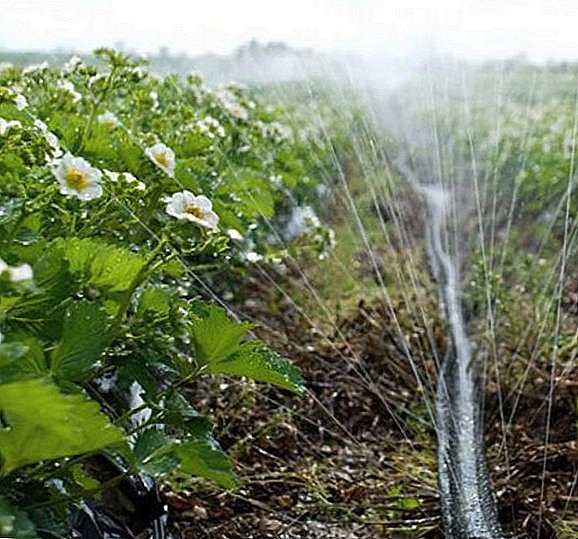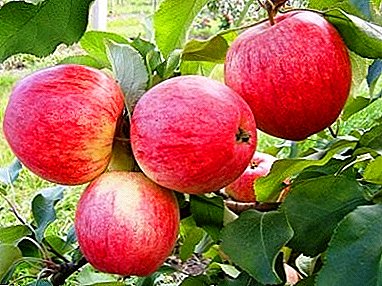
Apple-tree varieties Marat Busurin was bred relatively recently, but has already won the location of many gardeners.
The reason is the tasty and juicy fruits that can be stored for more than three months, as well as ease of care for the tree.
What kind is it?
The variety of apple trees Marat Busurin - a representative of the varieties of the autumn period of fruiting.
The fruits of Marat Busurin reach maturity in late August - early September. Despite this, with the right care apples can be consumed in the winter.
It is recommended to place the apples in a container made of wood or plastic and store in a cellar.Ideal storage temperature: 1-5 degrees Celsius.
Pollination
Successfully fruits on rootstock MM 109, Mark and 62-396.
Description variety Marat Busurin
Apple varieties Marat Busurin has medium height and medium-sized fruits. It is considered a natural semi-dwarf.
 Apple tree has a crown of standard density, but sprawling enough.
Apple tree has a crown of standard density, but sprawling enough.
Growth also does not exceed the average values for fruit trees.
Branches depart from the trunk at a right angle, the surface of the branches is densely covered with annuli.
Leaves in Marat Busurin they are bent on the middle level, have a yellow-green tint and serrate edges.
When flowering gives large buds white and pink color.
The fruits of Marat Busurin are small, but are considered larger than the average (the average weight of one fruit can vary from 100 to 250 g).
Ribbing is not bright in the cup.
Surface glossy, the color to match the leaves: greenish-yellow, when ripe, poured purple and red stripes.
After removal, during storage, changes color to white-marble with pinkish stripes.
Pulp like many fruits of other apple species, it has a white color, the taste is sweet, sweet-sour.
A photo
Vivid examples of apple fruit "Marat Busurin" in the photo:



Breeding history
The variety of apple trees Marat Busurin is considered a new variety. It was entered in the State Register of Breeding Achievements only in 2001, while officially It was created in 1998.
And V. Kichina, an employee of VSTISP, received it by crossing the donor sample SR0523 with the well-known variety Autumn Joy.
Growing region
Currently, the apple tree Marat Busurin actively distributed in the suburbs in homestead and suburban areas.
According to experts, the variety is particularly promising in the regions that are north of the Central.
Yield
Apple tree Marat Busurin begins fruiting in the third or fourth year after planting the seedling.
A distinctive and positive feature of this variety is abundant and regular fruiting, that is, The apple tree does not need annual respite from fruit set.
Average productivity in nurseries: 35t / ha, 100-120 kg of crop can be harvested from a tree. Apples have high transportability and long shelf life.
Planting and care
Planting and caring for apple varieties Marat Busurin are similar to integrated measures for growing other semi-dwarf apple trees.
 To plant a tree you need to choose the right plot.
To plant a tree you need to choose the right plot.
Best of all, apple trees grow in black soil.
Landing area should be protected from the wind.
It is not necessary that it be completely windless, but the so-called "places with drafts", which are characterized by frequent and strong gusts of air flow, for planting seedlings will not work.
The soil should be loose.
The laying of the soil under the plot should be no less than one and a half meters from the surface, since 1.5 meter is the depression that the root system of the tree can reach.
The dimensions of the landing pit should be 70 x 60 cm. When digging a hole, separate the top and bottom layers of soil.
IMPORTANT! The top layer is the most fertile and saturated with useful substances; it is he who will fall asleep at the bottom of the landing pit.
- The upper part of the excavated soil must be thoroughly mixed with fertilizer mixtures in the following proportions:
- Superphosphate - 600 g;
- Potassium chloride - 300 g (can be replaced with ash in a volume of 700 g);
- Humus or peat - 1-2 buckets.
IMPORTANT! Fresh manure can not be used.
Drive a peg into the center of the pit - it will continue to support your seedling in the process of growth.
Pour the mixture of soil and fertilizer mixture into the center of the pit so that a small mound forms.
Cover the top of the hill with that part of the topsoil that was without fertilizer. A layer of clean soil should be up to five centimeters thick.
IMPORTANT! Spread out the seedling root system before planting.
Put a seedling on a mound and cover it with a layer of soil without fertilizer.
IMPORTANT! The root system of the seedling should not touch fertilizer mixtures, because direct interaction may cause root burn.
Crop. Produced with the purpose of forming the crown and the direction of the tree on the proper expenditure of their forces.
An annual plant must be treated with shears at a height of 40 cm from the level of the soil before the buds awaken.
The first couple of years it is necessary to form the crown according to the sparsely-tiered scheme:
- in early spring, cut only branches at a sharp angle,
- others tie up to maintain horizontal direction.
It is advisable not to allow trees to bear fruit and bloom in the first two years after planting, the growth should be carefully cut.
In the years when the apple tree produces a large crop, reinforce the tree with pegs to reduce the load.
In the 2nd and 3rd year it is necessary to feed the tree with mineral complex fertilizers.
Mandatory weekly irrigation during the dry season. 1-2 buckets relies on one tree every seven days.
Loosen the soil should be careful not to damage the root system.
Diseases and pests

Green aphid.
A pest with an amazing reproduction rate: within a few days, an aphid column can strike most of the leaves of a tree.
Aphid sucks the juice from the greenery and shoots, because of which they die and fall.
Treatment: The most standard "old-fashioned way" is to release the ladybirds onto the tree. In parallel, you can spray the tree with a 3% dilution of nitrafen and / or karbofos.
Apple Mole.
Harm is caused by caterpillars that spend the winter on the bark of shoots and branches. During warming the caterpillar captures the leaves and creates the so-called "mines".
The moth begins to feed on leaves during the flowering period, after which it pupates in spider nests.
Treatment: Before the leaves appear and after the apple tree has blossomed, sprinkle with a seven percent solution of chlorophos.
Scab.
The most famous and most common disease of fruit trees. It occurs because of the fungus that overwinter in the foliage that has fallen and has not been harvested since autumn.
Spores of the fungus in the warming period capture the leaves and form spots with a green tint on them. Fruits on the same affected areas are pronounced, but have a brown tint.
Treatment: Clean and burn dead foliage in time. Treat the soil with a 3% nitrafene solution and the tree at the time of budding with a 1% Bordeaux liquid.
Root cancer.
The causative agent of the disease are bacteria. They fall into the tree from the soil through wounds on the roots. Bacteria increase the damaged area and destroy young seedlings.
Treatment: Before planting, coat the roots of seedlings with one-percent copper sulphate, then rinse with water. If the seedling is already amazed - do not plant it, but simply destroy it.
Apple-tree varieties Marat Busurin wonderfully master in a private garden and on the plot.
Apple is compact, does not require large areas, but gives a wonderful harvest.


